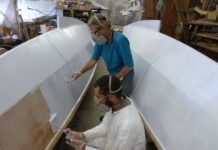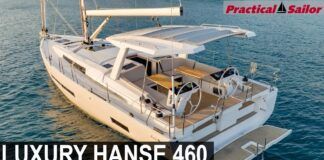A vast infrastructure of utility companies and governmental agencies collects, filters, treats, purifies, and distributes water that comes from lakes, rivers, reservoirs and underground aquifers. But some organisms have proven resistant to the best efforts of cities and their utility suppliers to assure safe water. Its a daunting task, as evidenced by the fact that two well-known, dangerous waterborne organisms, Cryptosporidium and Giardia, have been found in almost all surface waters and more than a third of all drinking water supplies in this country.
These tiny bugs in our water can cause big problems. Its estimated that close to a million people are sickened each year by them, and nearly a thousand die. In one widely reported episode in Milwaukee a few years ago, a large outbreak of illness sickened an estimated 400,000 people and was implicated in more than 100 deaths. The culprit in Milwaukee was Cryptosporidium, a protozoan that has been found at one time or another in the water supplies of 45 million Americans.
There are other problems with the water besides those two well-known pathogens. There are bacteria, some of which are harmful and others of which simply indicate the possibility of other contamination. And there are concerns about chemicals, mainly chlorine, used to disinfect the water supply. In the concentrations used for water purification, chlorine by itself seems to be harmless (though it certainly can affect taste), but it can react with organic material in the water to form compounds known as halomethanes, which may be carcinogenic.
Cruising conditions only make matters worse.
The Freshwater System
Typically, the freshwater system on any boat starts with a storage tank. The filling of the tank is the source of some of the problems; the storage part of it causes the rest. If you always fill your storage tank with high-purity water, free of harmful metal salts, organic chemical and microscopic contamination, your onboard water supply is off to a good start. Sadly, you can’t always be sure of obtaining this type of water even in the United States. If you cruise in more primitive areas, you can be pretty sure that you wont get that quality.
Storing water exacerbates the situation. Bacteria and other microorganisms have an opportunity to multiply in the tank. And any natural off-taste, from chlorine or other sources, may increase from reaction with the tank and lack of aeration. Accumulated dirt can add to the organic material available to react with the chlorine and form halomethanes. The bottom line is that tanking water can only make it worse, and usually does.
Safe Water the Easy Way
The most obvious and simplest strategy to provide safe potable water is to bring bottled water aboard for drinking, cooking and toothbrushing, and to use tanked water only for secondary uses, such as dishwashing and showering. The downside is youll have to lug all that water aboard and stow it, as well as pay for it.
And the Hard Way
If, however, youre planning a cruise thats long enough to make the use of bottled water impractical, then you will have to ensure that the on-board storage and delivery system are safe and sanitary.
To use your tank system for drinking water, we recommend first sanitizing the system, then treating the water with a chlorine compound to keep it germ-free, and lastly, filtering at the sink to remove the particulates, halomethanes, and the chlorine taste and odor.
Sanitizing consists of filling the system with a chemical and detergent solution that disinfects all of the components and cleans them thoroughly. Commercial food servers routinely sanitize their equipment, using a variety of proprietary mixtures. But you can do it yourself easily enough with common household ingredients.
Use a non-sudsing detergent and household bleach. The detergent used in automatic dishwashers is ideal, because it makes very few suds and is mildly caustic. The chlorine in the bleach is an excellent disinfectant.
Heres a way to proceed: In a large bucket, mix about 1/4 cup of dishwasher detergent (either the powder or gel type will do, but the gel type dissolves more easily) and about 1/8 cup of household bleach with warm water. Make sure the solution is fully dissolved and pour or pump it into the tank, which should be empty. Then, add about 10 gallons of warm water to the tank and then rock the boat to make sure that the solution is well mixed in the tank.
Next, open each tap on board, including showers, until the sanitizing solution appears at the outlet (you should be able to smell it). Let the solution remain in the tank and lines for at least an hour to assure good disinfection.
When thats done, you have to open all taps fully and allow all the sanitizing solution to be pumped out. Removing shower heads and other restrictions will speed this step. Finally, at least two full rinses are needed to make sure that all of the sanitizing solution is fully flushed out.
When all this is done, you can be reasonably sure that your freshwater system has been adequately disinfected. Now you can take on fresh- water.
Treating and Filtering
Once the tank is full of freshwater, add a small amount of household bleach. One teaspoon for every 20 gallons should be sufficient.
Still, chlorine-resistant organisms might still survive. Giardia and Cryptosporidium are oocysts (egg cysts) of parasitic protozoans and are between 3 and 6 microns in diameter. (A micron is a millionth of a meter or a thousandth of a millimeter.) Particles of that size are filterable and cartridge filters with micron-level capability are available for the purpose. The National Sanitation Foundation (NSF), a private standards organization, has a standard for filters that are suitable for removing Giardia and Cryptosporidium. Look for filters marked with NSF Standard 53 certification for cyst removal.
Stored water takes on unpalatable tastes and odors from the plastics and metals used in the tank and hoses, and its made even worse by adding chlorine. To improve the taste and reduce the odor, use a granulated activated carbon (GAC) filter. These are widely available. GAC filters can also remove halomethanes which might have accumulated as a result of the added chlorine. Luckily, many GAC systems will also remove Giardia and Cryptosporidium.
An aspect of water filtration that is serious, if not obvious, is the growth of bacteria on the surface of the filter itself. GAC filters in particular collect impurities-which are often nutrients for microbes-on the surface of the carbon granules, and provide an ideal growth medium for such critters. One standard way of dealing with this is to flush out the filter by opening the tap for a minute or so before you use the water-often not practical on a boat, where the water supply is limited.
A solution is a filter system that sterilizes the water after it leaves the filter. Such a system is the Water Fixer, which uses high-intensity UV light to treat the water. Other systems use metallic silver deposited on the carbon granules to act as a bacteriostat. Were not as confident about such systems (technically known as oligodynamic filters).
We talked to experts at the NSF who told us that the low concentrations of silver permitted by law may not be adequate to deal with severe contamination.
The Value Guide lists commonly available water-purification systems for marine use (there are others, but we concentrated on those readily available from marine outlets), and describes what they do and don’t do.
There are other ways to provide good drinking water, such as reverse osmosis systems and distillation units that can desalt and purify sea water, but theyre large and expensive.
Recommendations/Conclusions
Bottled drinking water may be the safest way to go, but there is a limit to how much you can carry.
If bottled water isn’t the answer for you, next best is a system that deals with all the potential problems. The Water Fixers UV sterilization system, following two stages of filtration (5 microns followed by 0.5 microns) deals effectively with microbiological contamination. Its GAC element in the second stage of filtration handles dissolved halomethanes, metallic salts, and similar pollutants. The UV treatment draws 2.3 amps, but the Water Fixer delivers at a flow rate of up to 4 gallons per minute.
The Water Fixer is not cheap (about $350), but, in combination with a periodic tank sanitizing program, it should provide you with safe, good-tasting water under almost any cruising conditions.
If your concern is only with taste or sediment, there are several filters, such as the Ametek and the Racor (the one that combines filter and GAC), that will do the job for under $50.
Contacts- Ametek, Plymouth Products, 502 Indiana Ave., Sheboygan, WI 53082; 800/222-7558. Aqua City, 1173 Hacienda Ave., Campbell, CA 95008; 800/962-5515. Racor, Box 3208, Modesto, CA 95353; 209/521-7860. Seagull, General Ecology, 151 Sheree Blvd., Exton, PA 19341; 610/363-7900. Systems IV, 6641 W. Frye Rd., Chandler, AZ 85226; 602/961-1225. Water Fixer, CHS Group, 43357 Business Park Dr., Temecula, CA 92590; 888/699-6166.



































